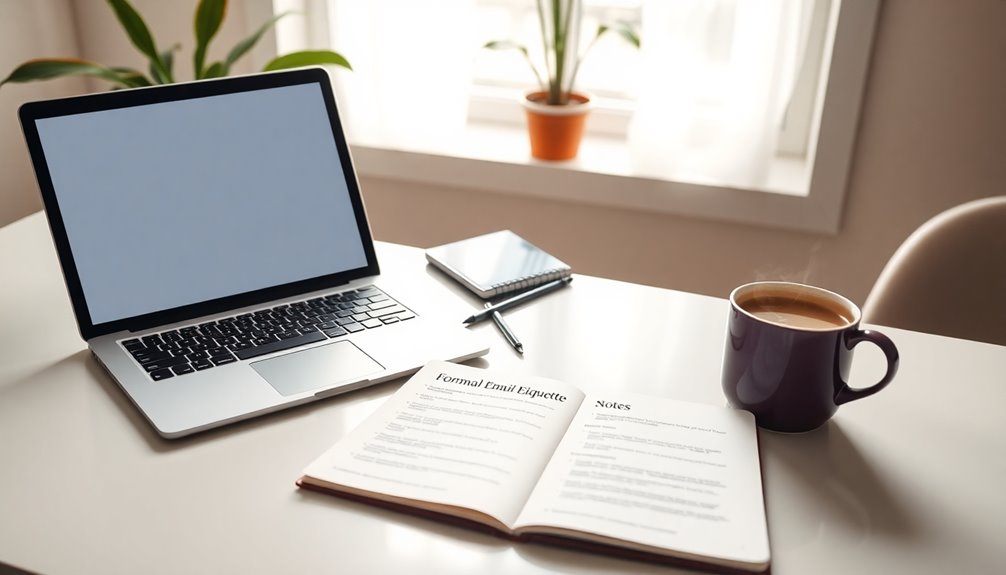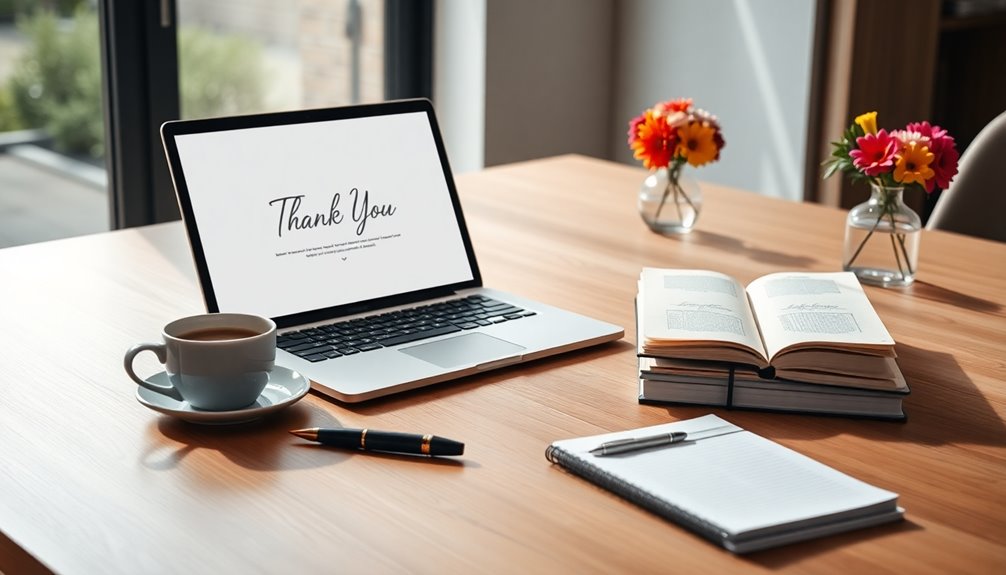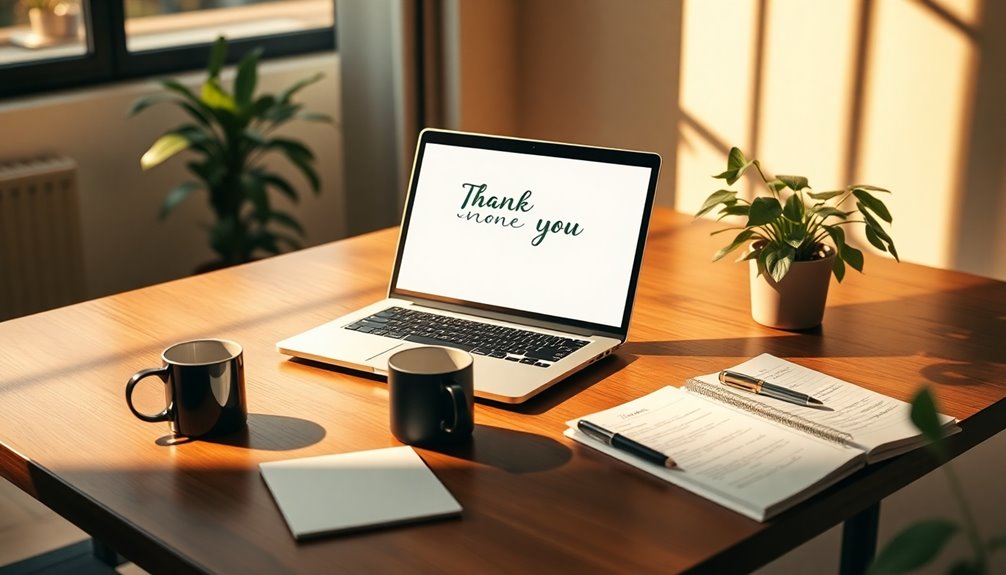To write a formal email that makes a great impression, start with a clear subject line and a professional greeting. State your purpose within the first sentences and keep paragraphs short. Use a respectful tone, avoid slang, and be concise to respect the recipient's time. Proofread for errors and ensure clarity throughout. Don't forget to include a proper closing and your contact information. Following these steps not only enhances your credibility but also increases your chances of receiving a timely response. There's much more to learn about crafting effective emails that resonate professionally.
Key Takeaways
- Start with a clear subject line that reflects the email's purpose to grab attention immediately.
- Use a professional greeting and maintain a respectful tone throughout the email.
- State the purpose clearly within the first 1-2 sentences to ensure focus and clarity.
- Divide content into short, concise paragraphs to enhance readability and engagement.
- Proofread for spelling and grammar errors to demonstrate attention to detail and professionalism.
Introduction

When you need to communicate effectively in a business environment, knowing how to write a formal email is essential. A well-structured email sets the tone for professionalism and ensures that your message is received clearly. The first step is crafting a good subject line that summarizes your email's purpose. This helps the recipient understand the importance of your message right away.
Next, you'll want to use a professional salutation, like "Dear Mr. Smith," to establish respect and set a courteous tone from the outset.
The body of your email should be clear and concise, stating your purpose within the first few sentences. This approach captures the recipient's attention and conveys your message without unnecessary fluff.
Lastly, end with a well-crafted closing, such as "Kind regards," followed by your full signature. This reinforces professionalism and leaves a positive impression.
By following these email etiquette guidelines, you'll not only communicate effectively but also create an image of professionalism that can open doors in your business interactions.
Builds Professional Credibility
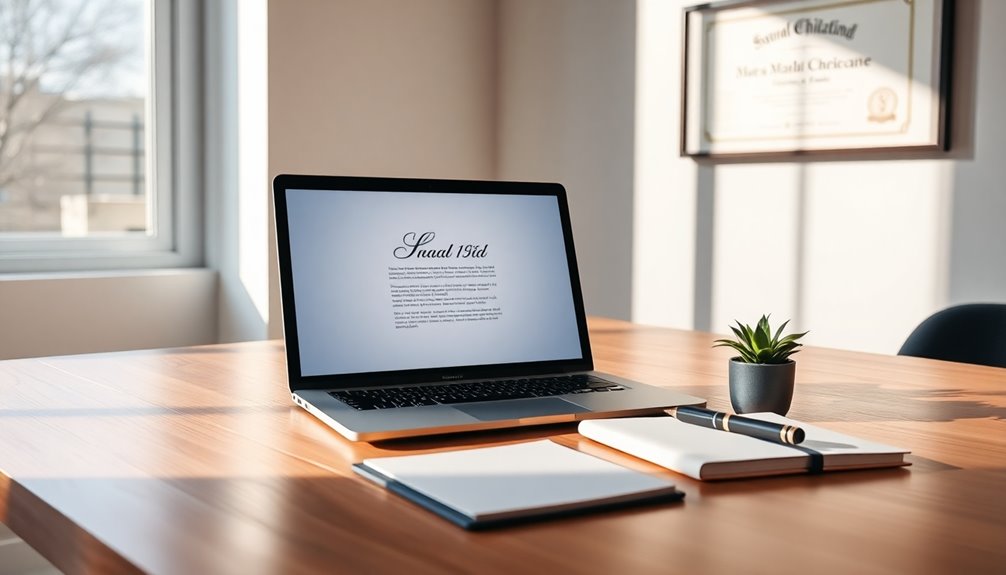
A well-crafted formal email not only conveys your message but also builds your professional credibility. When you use a professional email address, it sets the stage for effective communication and fosters trust.
Remember, your emails reflect your attention to detail, so adhering to email etiquette tips is essential. Start your email with a respectful greeting and wrap it up with an appropriate sign-off; this reinforces your credibility and establishes a positive tone for your email.
To make a good impression, focus on using clear and concise language. Avoid grammar errors by proofreading your emails before hitting send, as this showcases your commitment to professionalism and helps prevent misunderstandings.
Furthermore, descriptive subject lines are crucial; they inform the recipient about the content and increase the likelihood of your email being opened and responded to.
Incorporating these elements into your professional communication ensures that your emails not only deliver the intended message but also enhance your reputation.
Clear and Concise Messaging
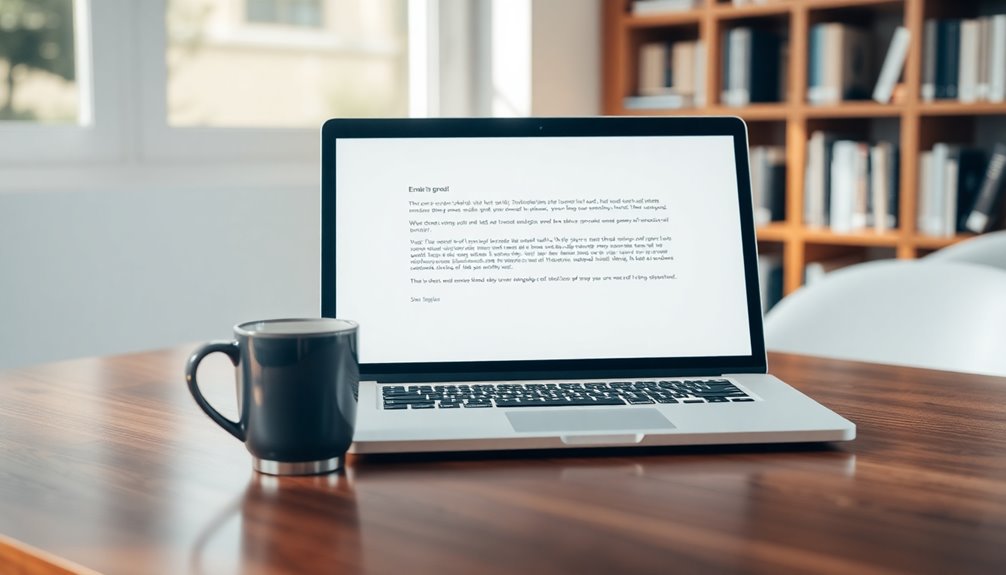
Effective communication hinges on clear and concise messaging. When you write professional emails, start with a clear statement of purpose to inform the reader of your intent right away. This helps reduce any confusion and sets the tone for the rest of the email.
Keep your body text to 1-2 short paragraphs, making it easy for recipients to grasp the main point quickly. Use bullet points or numbered lists when appropriate to organize information clearly. This approach not only enhances readability but also allows the reader to digest key points in a snap. Additionally, consider automating your email reminders to ensure timely follow-ups, similar to how you would automate contributions in a retirement savings plan for consistency. Regularly updating your messaging based on audience pain points can further improve engagement and effectiveness.
Step-by-Step Guide to Formal Emails
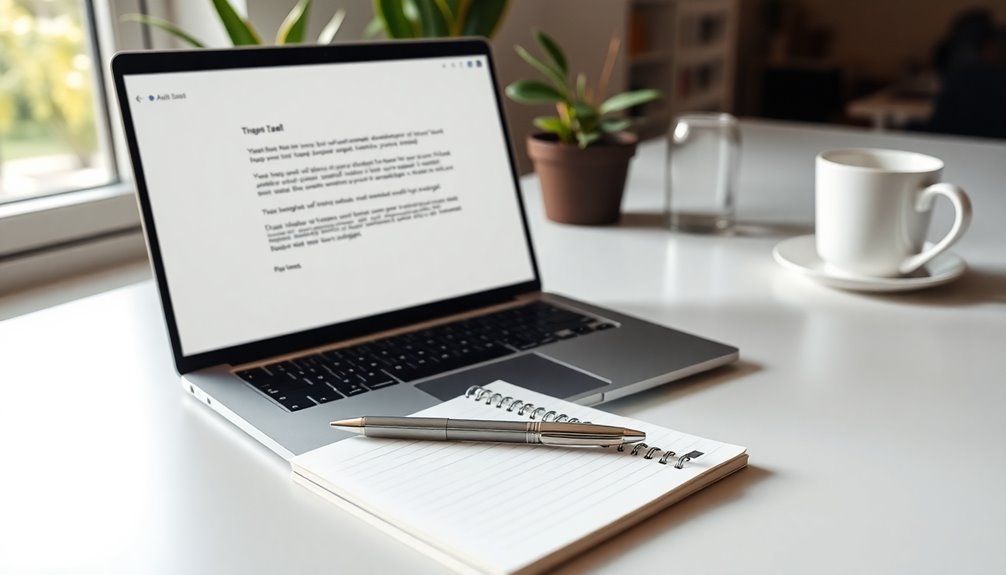
How do you ensure your formal emails leave a lasting impression? Start with a clear and concise subject line that summarizes your email's purpose in seven words or less. This approach encourages prompt attention from your recipient.
Next, use a professional greeting, addressing your recipient by their title and last name, like "Dear Mr. Smith." This sets a respectful tone right from the beginning.
In the opening sentences, clearly state the purpose of your email, keeping it organized in one to two short paragraphs. This enhances clarity and maintains the reader's interest.
Remember to avoid casual language, slang, and emojis; stick to a professional tone to reflect high standards of communication.
Dos and Don'ts for Formal Emails
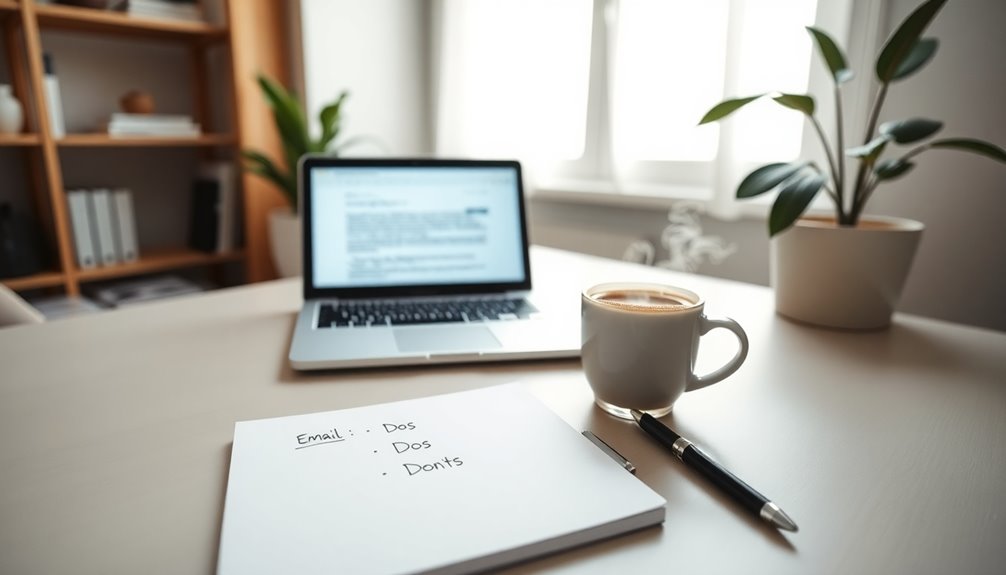
When crafting a formal email, it's essential to keep in mind the dos and don'ts that can make a significant difference in how your message is received.
First, make sure to use a clear and concise subject line that accurately reflects your email's content. This helps grab the recipient's attention right away. Start with a formal greeting, addressing the recipient by their title and last name. This establishes professionalism from the first paragraph.
Now, let's talk about what to avoid. Don't use informal language or slang; maintaining a professional tone shows respect.
Also, don't include unnecessary information or ramble; respect your reader's time by keeping the email brief and focused on the main point.
Lastly, always proofread your email for spelling and grammar errors before hitting send. Mistakes can undermine your credibility and professionalism, making it harder for the recipient to understand your message.
Examples of Formal Email Templates

Creating formal emails can be streamlined by using well-crafted templates tailored for various situations. A formal email template typically includes a clear subject line, a professional greeting, a concise body, and a formal closing. This structure enhances clarity and professionalism in your email communication.
For common scenarios, like meeting requests or follow-ups, using templates can save you time and ensure consistency. Start with a clear subject line that reflects the email's purpose, such as "Meeting Request: [Date/Topic]."
Use a professional greeting, addressing the recipient by name, like "Dear [Recipient’s Name]." In the body, keep it concise—state the purpose, provide essential details, and include any necessary calls to action. For instance, "I'd like to schedule a meeting to discuss [specific topic]. Please let me know your availability."
Lastly, close with a formal sign-off, such as "Best regards," followed by your name. Including placeholders for recipient names and specific details allows for personalization while maintaining a formal tone.
Pro Tips for Writing Effective Emails
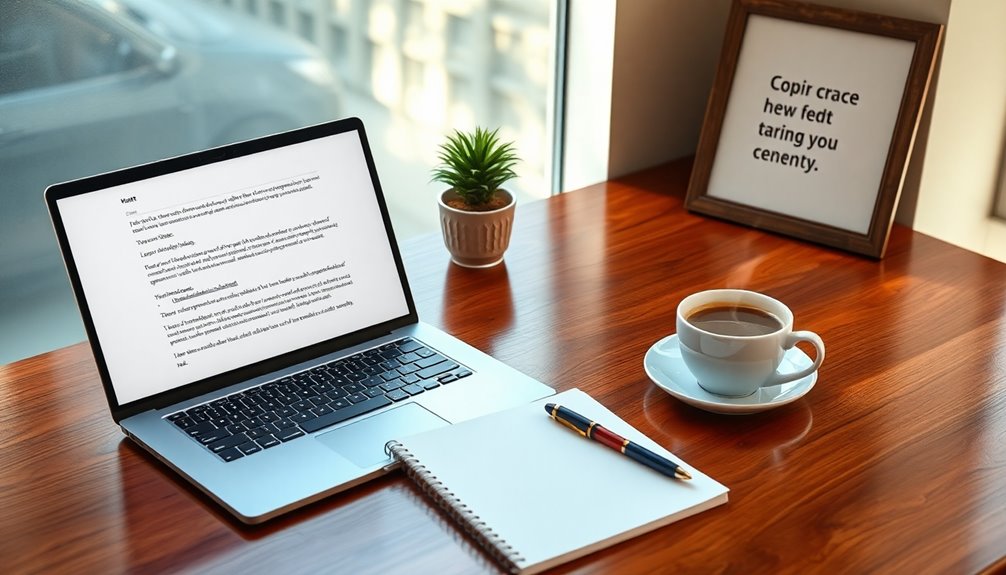
While crafting effective emails may seem straightforward, a few key strategies can significantly enhance your communication.
Start with a clear and descriptive subject line that summarizes your email's content in seven words or less. This encourages prompt attention from the recipient.
Use a formal greeting, addressing the recipient by their title and last name to establish professionalism and respect from the outset.
In the first sentence, clearly state the purpose of your email to capture the reader's attention and provide context. This sets the tone for the rest of your message.
Keep the email body concise, limiting it to 1-2 short paragraphs. This ensures clarity and maintains the recipient's engagement.
Final Thoughts
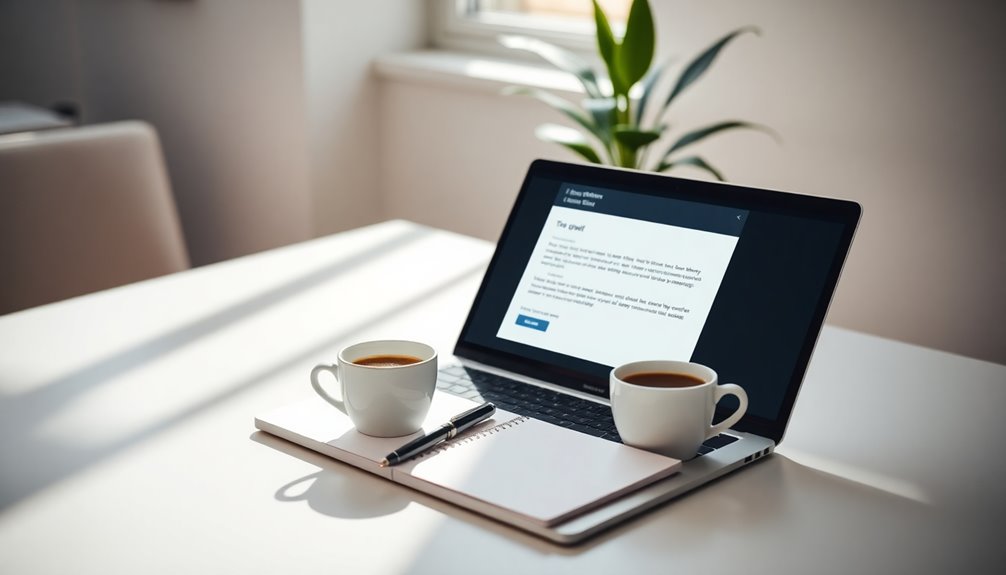
In summary, mastering the art of formal email writing can enhance your professional image and strengthen relationships with colleagues and clients alike.
When you send a business email, start with a clear subject line that summarizes the content in seven words or less. This simple step increases the chances of your email being opened and read promptly.
Always use a professional greeting, like "Dear [Title] [Last Name]," to set a respectful tone. Make sure you know the name of the person you're addressing, as it shows attention to detail.
Be concise and point quickly to your message's purpose, outlining any next steps you'd like the recipient to take.
Proofreading is essential; grammar and spelling errors can undermine your professionalism.
Finally, end your email with a formal closing, such as "Sincerely," followed by your full name, position, and contact information.
These easy steps not only reinforce your professionalism but also make it simple for recipients to reach out. Remember, you want them to look forward to hearing from you again, so make every email count!
Frequently Asked Questions
How to Make a Good First Impression Through Email?
To make a good first impression through email, start with a clear subject line that grabs attention.
Use a professional greeting, addressing the recipient properly.
Get straight to the point in your opening sentence to engage them quickly.
Keep your tone polite and respectful throughout the message.
How Do You Write an Effective Formal Email?
To write an effective formal email, start with a clear subject line.
Use a professional greeting, addressing the recipient by title and last name.
State your purpose right away to grab their attention.
Keep your message concise, focusing on essential points without unnecessary details.
End with a polite closing, and make sure to include your full name, position, and contact information.
This structure helps you convey professionalism and clarity.
How Do You Write a Professional Sounding Email?
To write a professional-sounding email, start with a clear subject line that captures attention.
Use a formal greeting, addressing the recipient appropriately.
State your purpose right away, so they know what to expect.
Keep your message concise and focused, avoiding unnecessary jargon.
Conclude with a polite closing, and include your full name, position, and contact information.
This structure not only shows respect but also enhances clarity and professionalism in your communication.
How Do You Write an Email to a Respected Person?
To write an email to a respected person, start with a respectful greeting, like "Dear Dr. Smith."
Clearly state your purpose in the opening sentence to capture their attention. Keep your tone polite and formal, avoiding slang.
Be concise and stick to the main points to show you value their time.


